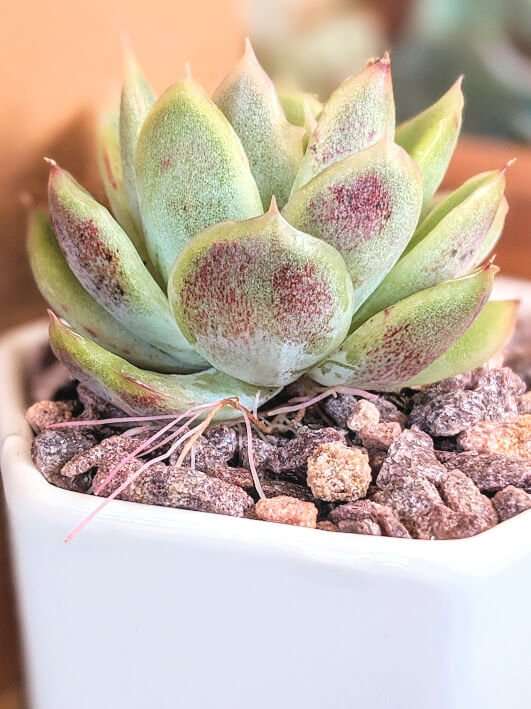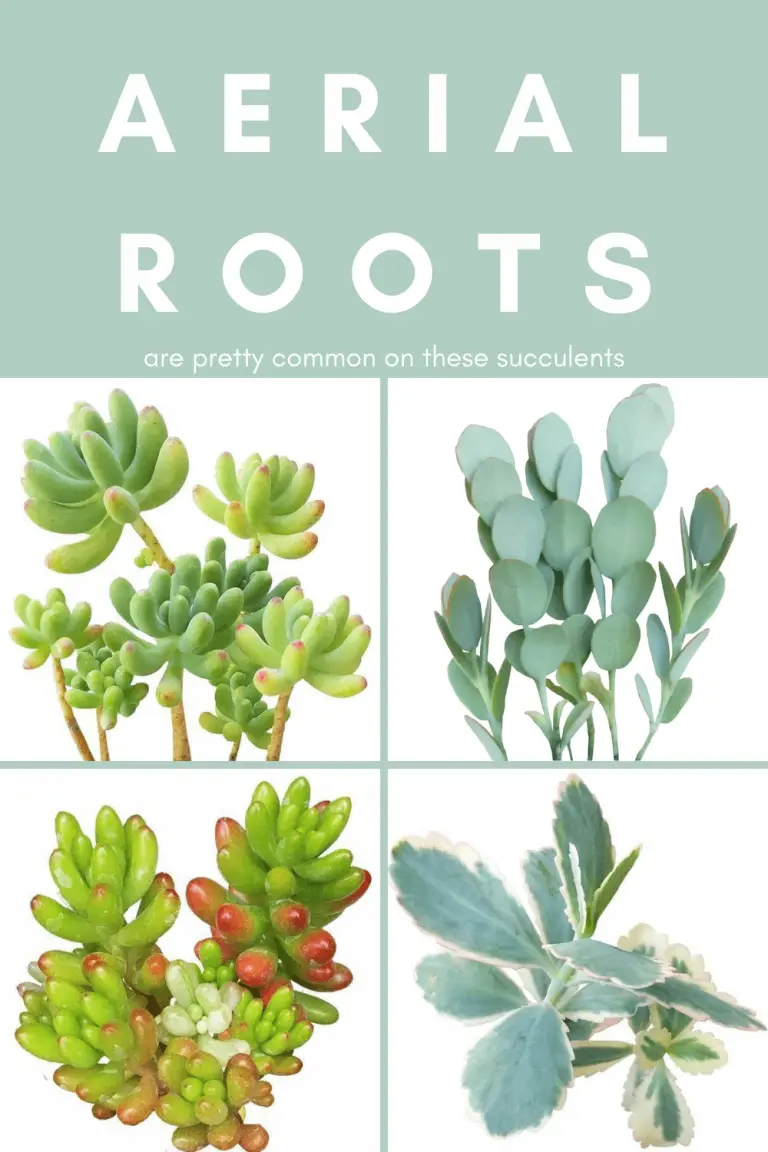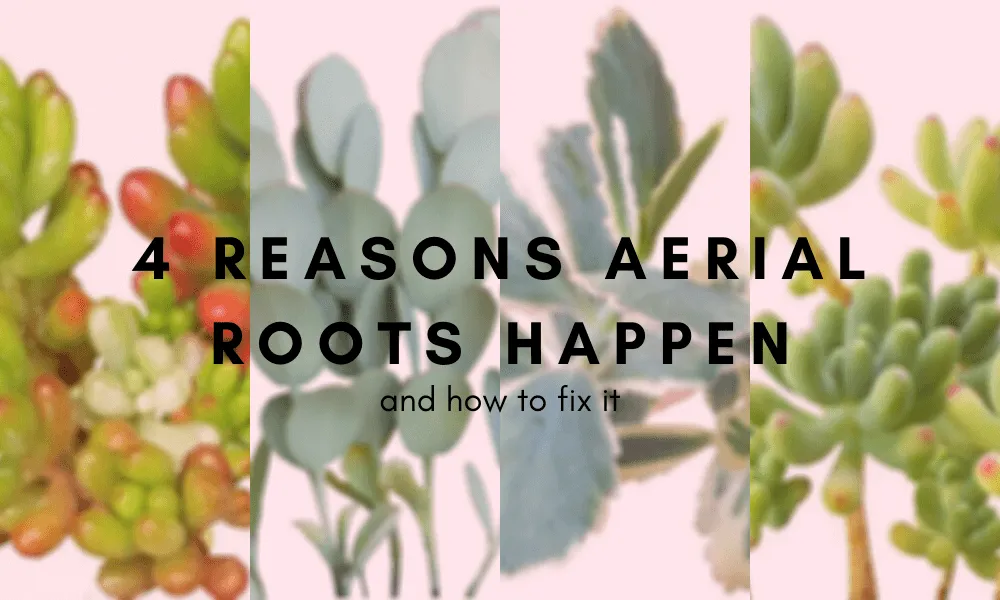Firstly, don’t panic. Aerial roots growing from the stem of your succulents don’t necessarily mean your plant is unhealthy and something is wrong. A little bit of observation can help you decide what you want to do about them once you know why your succulents are shooting out roots from the not root area.
The aerial roots have the same purpose as normal roots – to absorb water and nutrients to support the plant. But they sprout from stems or leaves instead of the root ball.

What do aerial roots look like?
Aerial roots tend to be longer and thinner than normal roots. They wave around, looking almost hairy.
Why do aerial roots form?
• Propagation – The primary purpose of aerial roots is to produce new offsets that can be propagated into mature succulents. By sprouting roots from stems or leaves, the plant can generate new individuals to spread growth.
• Survival – Producing offsets through aerial rooting helps ensure the survival of the species. Even if the main plant dies, the offsets have a chance of surviving and continuing the lineage.
• Resource acquisition – Sometimes aerial roots sprout from stems in search of more favorable conditions for growth, such as higher light, moisture, or nutrients. The roots are probing the environment for better access to resources.
• Stress response – Aerial root formation can be a response to environmental stresses like low humidity, poor soil conditions, infrequent watering, or lack of nutrients. The roots are a mechanism to escape adverse conditions.
• Natural sprouting – Some succulents naturally propagate extensively through offsetting and aerial rooting. It’s an innate characteristic of the species. They offset readily even with optimal growing conditions.
• Wounding response – Occasionally, aerial roots form in response to damage, wounds or cuts on the stems. The roots sprout from the wound as a means of regenerating lost tissue and propagating new growth.
• Mutation – Rare mutations can sometimes trigger excessive aerial root formation and offsetting in succulents. The plant has a mutated trait that spurs prolific sprouting of new growth. These mutated plants can then be propagated.
Learn more about how to water succulents here.
What are some ways to prevent aerial root formation?
- Improve growing conditions. The main reasons for aerial rooting are often stress or lack of resources. Make sure your succulent has bright light, well-draining soil, adequate watering, and necessary nutrients. Keep the environment consistent and the plant will have less need to propagate new growth.
- Choose a succulent less prone to offsetting. Some succulents, like Echeverias, Crassulas and Sempervivums naturally offset more than others. Select succulents known for being single-headed or less prolific propagators.
- Prune offsets regularly. Even with optimal conditions, many succulents will still produce some aerial roots and offsets over time. Use a sharp, sterile knife and cut offsets off at their base, taking care not to damage the main stem. Prune consistently to help prevent build-up.
- Provide less fertilizer (for succulents that root readily with nutrients). Some succulents produce more offsets when fertilizer levels are high. Reduce or discontinue fertilizer applications, at least for succulents prone to frequent offsetting.
- Repot if root bound. If the succulent has become pot bound, it may produce more aerial roots in search of more soil and resources. Pot bound succulents often offset very vigorously. Gently repotting in fresh, well-draining soil can help curtail excessive root sprouting.
- Improve air circulation. Stale, humid air can promote more vigorous aerial rooting and offsetting in succulents. Using a fan to improve air flow, opening a window, or moving the plant to a brighter spot can help. More airflow reduces the humidity around leaves and stems, limiting root sprouting.
Aerial roots are not the only thing that you might see growing out of your succulent. If you’re not sure what it is, take a look at What is Growing Out of My Succulent? A Simple Guide With Tons of Pictures
Aerial roots can also just be one way your succulent is physically stabilizing itself. This is commonly seen with some sedum, kalanchoe, and aeonium.


